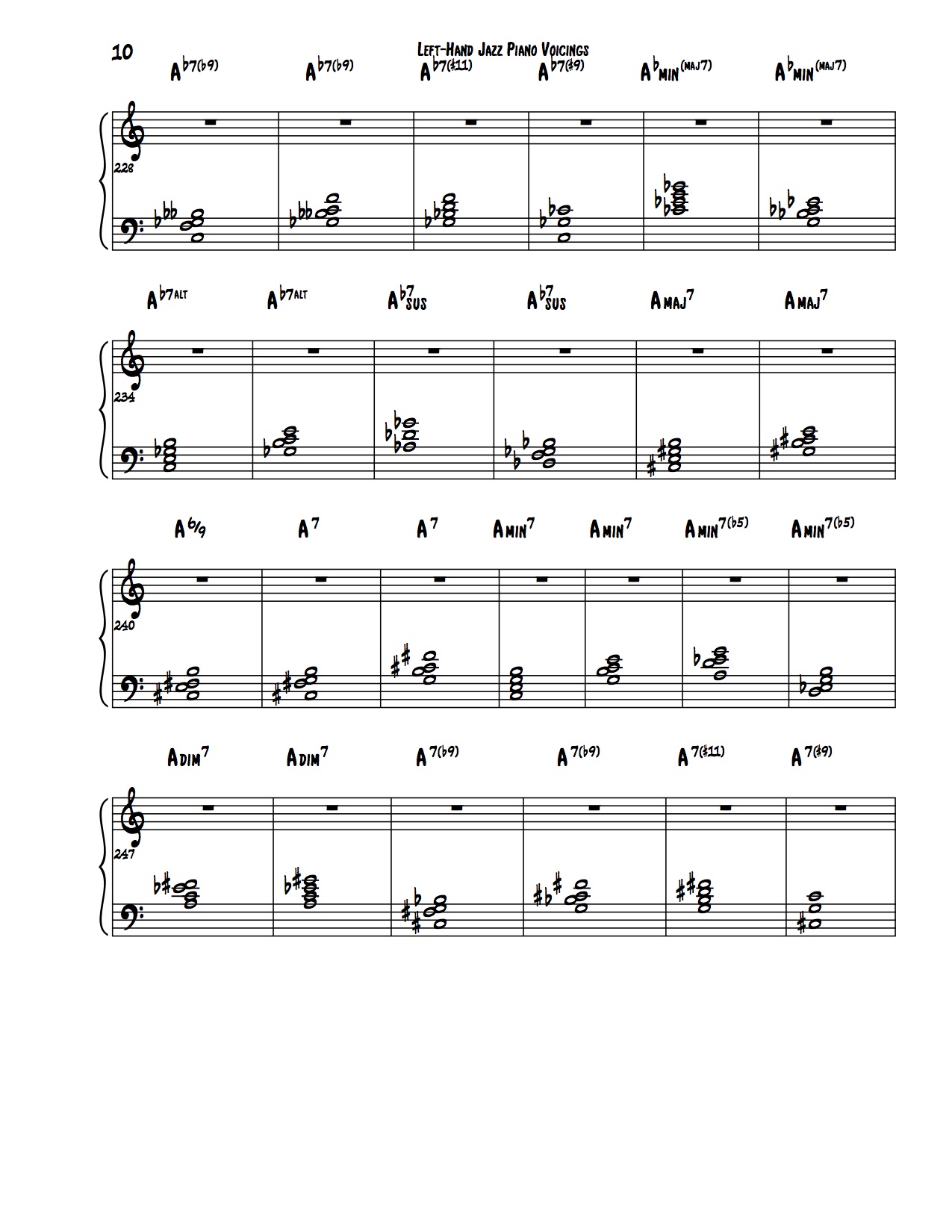This PDF will be a BIG help to many jazz pianists and other instrumentalists who want to get better at voicing chords in their left hand! Many players could benefit from having this reference sheet, which has most of the chords jazz musicians are likely to encounter.
This isn’t an all-encompassing resource, as a resource that truly lists every possibility would be impossible. There are surely chords that are left out. This list does not contain more than two ways of playing any chord, and in many cases there is only one voicing listed for a particular chord. However, MANY chords ARE listed, and this should be a great resource for jazz pianists looking to expand their vocabulary of left-hand voicings.
Most of these voicings are rootless. These left-hand voicings were largely pioneered in the 1950s by jazz pianists such as Bill Evans. Jazz pianists in the decades prior to the 1950s generally played more block chords and/or shell voicings (like roots and 7ths) and put the root in their voicings most of the time. These voicings mark an evolution in the left-hand comping style of many jazz pianists from the 1950s on.
The chords I’ve listed are:
- maj7
- 6/9
- min7
- dominant 7 (i.e. C7)
- min7(b5)
- dim7
- 7(b9)
- 7(#11)
- 7(#9)
- 7alt and
- min(Maj7)
A 7th chord has a 1, 3, 5, and a 7.
A maj7 chord is: 1, 3, 5, 7
A dominant 7th chord is: 1, 3, 5, b7
A min7 chord is: 1, b3, 5, b7
A min(b5) (or half-diminished) chord is: 1, b3, b5, b7
A dim7 (or fully-diminished) chord is: 1, b3, b5, bb7 (bb7 is enharmonically the same as 6 or 13)
It is worth important to note that in many cases I’ve add extensions or alterations to the voicing without labeling all of the extensions or alterations. For example, for a C7 voicings I’ve added the 9th and the 13th. The reason I’ve done so is because you are more likely to see the chord symbol “C7” than “C13” in sheet music.
This is just the beginning! You’ll want to add more voicings along the way and start developing your own style. Listen to lots of different pianists, and “steal” voicings from them. Find your own voicings. This PDF will give you quite a few voicings to help you get started on your journey!
If music theory has always seemed confusing to you and you wish someone would make it feel simple, our free guide will help you unlock jazz theory secrets.BEFORE YOU CONTINUE...





















